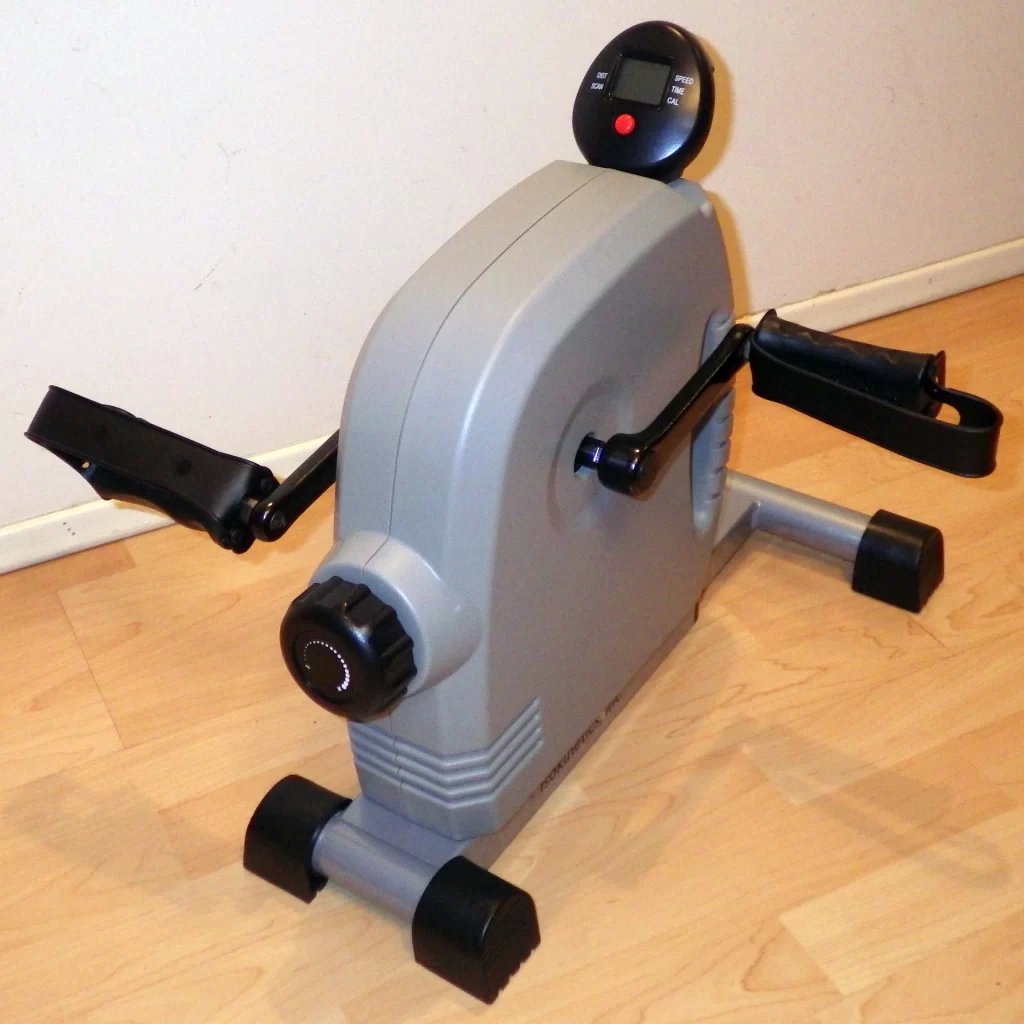Pedal Exerciser vs. Walking: Which One is Better?
Picture this: You’re taking care of a loved one who wants to stay active and maintain their health, but their mobility is limited. Now, you’re faced with the dilemma of choosing the right exercise option for them. Should they hop on a pedal exerciser or take a good old-fashioned stroll? It’s a tough choice, but fear not! In this blog post, I will share the pros and cons of pedal exercisers and walking to help you make an informed decision. Let’s get those legs moving, shall we?
The Pedal Exerciser

Let’s kick things off by talking about the pedal exerciser. This nifty little gadget resembles a bike pedal attached to a compact frame, and it’s designed to offer a low-impact cardiovascular workout. It can be used while seated, making it a convenient choice for those with limited mobility or balance issues.
Pros:
Convenience: Whether your loved one is watching TV, reading a book, or simply relaxing, they can easily use the pedal exerciser without stepping out of their comfort zone.
Low Impact: For seniors or individuals recovering from injuries, the gentle, repetitive motion of pedaling places minimal stress on joints, reducing the risk of strain or injury.
Adjustable Resistance: Many pedal exercisers come with adjustable resistance levels, allowing users to tailor the intensity of their workout to their fitness level.
Cons:
Limited Range of Motion: While the pedal exerciser targets the lower body muscles, it may not engage the upper body as effectively as walking does.
Potential Boredom: Some individuals may find the repetitive motion monotonous, making it less engaging in the long run.
The Joys of Walking:

Now, let’s take a stroll and explore the benefits of good ol’ walking. Walking is a fundamental human activity and requires no special equipment, making it accessible to almost everyone.
Pros:
Full-Body Workout: Unlike the pedal exerciser, walking engages both the upper and lower body muscles, providing a more comprehensive workout.
Vitamin D Boost: Walking outdoors exposes your loved one to natural sunlight, which promotes vitamin D synthesis, essential for strong bones and overall well-being.
Mental Health Benefits: Walking in nature can have a calming effect, reducing stress and anxiety levels, and enhancing mood.
Cons:
Weather Dependent: Walking outdoors might be less appealing during extreme weather conditions, such as scorching heat or freezing cold.
Impact on Joints: While walking is generally considered a low-impact exercise, it can still put stress on joints, which may be a concern for those with joint-related issues.
Comparing the Calorie Burn

Now, let’s talk numbers! Many caregivers might be curious about which option burns more calories. Well, it depends on factors like intensity, duration, and the individual’s weight.
Pedal Exerciser: For a 30-minute session on a pedal exerciser, an average person might burn around 100-150 calories. Of course, this number can vary based on the resistance level and pedaling speed.
Walking: A leisurely 30-minute walk at around 2 mph might burn approximately 100-150 calories, but picking up the pace to 3.5 mph can boost the calorie burn to 150-250 calories.
While walking can burn more calories depending on the intensity, the differences are not substantial. The key is to find an activity your loved one enjoys and can stick to in the long term.
The Social Aspect:

Exercise doesn’t have to be a solitary affair. The social aspect of physical activity can be just as beneficial as the exercise itself, especially for individuals who may feel isolated or lonely.
Pedal Exerciser: Since the pedal exerciser is typically used indoors, it may not offer the same social opportunities as walking outdoors or in a group setting.
Walking: Walking in a park or joining a walking group allows your loved one to interact with others, fostering a sense of community and boosting their emotional well-being.
Incorporating Both
The good news is, you don’t have to choose between pedal exercisers and walking! Both options have their unique benefits, and they can complement each other wonderfully.
For instance, your loved one could use the pedal exerciser on days when going outside is challenging due to weather or health concerns. On other days, they can enjoy the fresh air and social interaction of walking.
By incorporating both activities, your loved one can keep their exercise routine fresh and exciting while targeting different muscle groups and staying motivated.
Conclusion
The pedal exerciser and walking each have their merits and cater to specific needs. Whether your loved one prefers the convenience of indoor pedaling or the joy of strolling outdoors, the key is to keep them active and engaged.
Remember, what matters most is finding an activity they enjoy and can sustain in the long run. So, why not have a chat with your loved one and see which option sparks their interest? Share your thoughts and experiences in the comments section below. How do you keep your loved ones moving? Let’s keep the conversation going!
